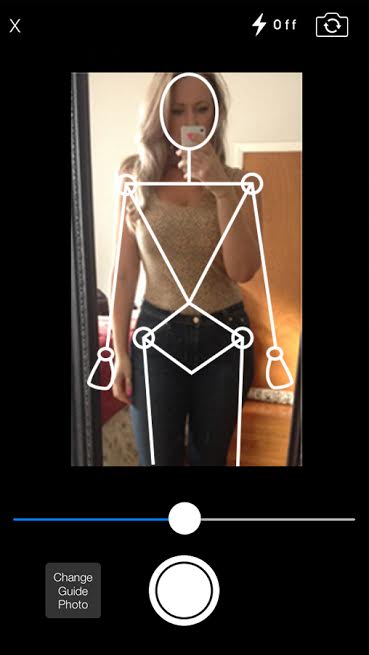 Weilos
Weilos
The digital health market is growing. Funding for digital health companies reached nearly $700 million in the first quarter of 2014, and grew 87 percent compared to the first quarter of 2013, according to a report from Rock Health. Along the way, digital health startups have reorganized, rebranded, and shifted focus to meet the needs of their customers or to meet the needs of a new customer group.
MobiHealthNews has identified ten startups that have pivoted to reach a new customer or develop an entirely new type of product.
Weilos: One of the most recent pivots, in January 2014, came from weightloss startup Weilos. The company initially offered users a peer-to-peer network that connected people who were weight loss success stories to those who were just beginning their journey, or had tried to lose weight before without reaching their goals. After a few months trying out this business model, Weilos pivoted to provide users with a picture taking app meant to document weight loss through selfies. While the Weilos peer-to-peer coaching service used to cost $19, $39 or $59 per month depending on the coach, the new Weilos app is free.
Many digital health startups decided to pivot because selling to hospitals and employee wellness platforms was a better market than selling directly to consumers.
EarlySense: EarlySense, maker of a passive and contactless bedside monitor, started direct to consumer, switched, but now plans to return to the consumer market. The company launched nearly 10 years ago and developed sensing technologies for home patient monitoring, but pivoted three years after launching because EarlySense CEO Avner Halperin said the home monitoring was not a mature market yet and its business model was not yet fully apparent. In January 2014, the second generation of the device, which continuously measures respiration rate, heart rate, and motion, received FDA clearance.
Keas: Keas, which launched in late 2009, has also found more success with a B2B business plan. Originally, Keas planned to offer various personalized care plans for consumers interested in leveraging their personal health data to make healthier decisions. Then in November 2010, after they did not gain enough traction as a consumer health play, Keas transformed into a workplace wellness program.
Jiff: Another company, called Jiff, that launched with a patient education platform, called JiffPad, announced in June 2013 that they were pivoting from the provider-focused patient engagement tool to business-to-business employee wellness curation program. Their new service is called Health Outcomes Marketplace. Jiff's CEO Derek Newell offered an explanation for the company's pivot.
“Since the beginning, the founders’ goal was to bring what they had learned in social networking and gaming to healthcare, and they always thought they would do that through the development of a platform,” Newell told MobiHealthNews at the time. “[JiffPad] was downloaded by thousands of people and used regularly by them. But JiffPad, while an interesting product, was never going to transfer to a big opportunity.”
Orca Health: Orca Health, on the other hand, chose to refocused its mobile medical reference tools on medical professionals in October 2013 because a majority of feedback coming in about the product was from healthcare providers. There were close to 200,000 users on Orca's platform when they pivoted and 70 percent of this group was made up of medical professionals. The new program that was announced with the pivot is called Patient Education for Healthcare Professionals, which is a series of interactive iPhone and iPad apps that allows clinicians to prescribe educational material to their patients.
Another group of companies pivoted into and out of the mobile personal emergency response system (mPERS) space.
Lifecomm: One of the earlier pivots came from Qualcomm's Lifecomm, which was originally conceived as a healthcare-focused mobile phone service, but shut down in 2009. In 2010, the Lifecomm brand was reborn as an mPERS device. The new Lifecomm planned to leverage its majority owner, HTI’s, infrastructure, call center expertise and flexible technology platform. The next year, Verizon bought HTI and with it Lifecomm. While Verizon still lists it as one of its wellness products, links on the site that point to more information about Lifecomm are dead.
QMedic: A few years later, digital health company QMedic pivoted to mPERS from the activity tracker space. The waterproof, wristworn device collects longitudinal data constantly and has a battery that lasts over a year. It can detect and alert a caregiver when the wearer falls, sleeps worryingly late, or neglects to wear the device. Since pivoting, QMedic was awarded a $2.2 million grant from the National Cancer Institute “to create next-generation passive sensing and self-report tools to enhance clinical interventions for at-risk patients.”
Wellcore: In 2011, mPERS device maker Wellcore pivoted the other way. The startup launched as a fall detection system for aging in place in 2010, but announced the launch of a new product called NewYu, a fitness monitor that can identify specific body movements and track fitness progress via an Android app the next year. NewYu has since been put out to pasture too.
Some startups pivoted after they were acquired by larger companies.
Daily Burn: Daily Burn, which started out creating data-centric smartphone fitness apps, pivoted after media company IAC acquired them in 2010. The startup then moved away from data and began offering a video-focused service that provides many clips of different kinds of workouts to encourage users to exercise four to six times per week. Last year, the company made it onto Apple's list for top 42 iPhone fitness apps.
Vitality: Another startup, Vitality’s GlowCap, a smart pill cap that launched in 2009, pivoted and then re-pivoted. The company started out offering the product directly to consumers via Amazon.com, but after it was acquired by Nant Health, it changed up its strategy and began distributing GlowCaps through partnerships with employers and pharmaceutical companies. However, in March 2013, Vitality made their product available for direct-to-consumer purchase again, this time from CVS. As of this writing CVS.com no longer sells GlowCaps.















